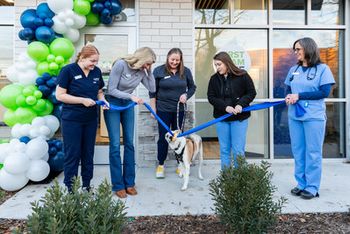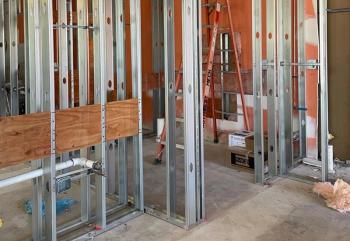
- Vetted September 2019
- Volume 114
- Issue 9
The tidy veterinary hospital
Say bye to the junk. Declutter your practice. Spark joy in part one of this series that will help you learn that a streamlined practice is an efficient one!
If you haven't been living under a log this year, you have heard of the magnetic minimalist Marie Kondo and the
While the KonMari Method is all the rage in the home, business managers have not as eagerly tackled decluttering in the workplace-particularly the medical workplace-where stuff piles up because of the nature of the business. But why not? Why compartmentalize tidiness and joy, as well as the other efficiency benefits, to the home? Why shouldn't veterinary professionals discover the freedom, productivity and serenity that a tidy hospital can bring? I challenge you to take advantage of this opportunity in your workplace while we're all tidying up together!
The question you may ask first is-why? After all, it will take effort to tidy your hospital, and who really cares? Will you make more money decluttering rather than tending to patients and clients? Is it really your job to do this? Aren't there enough pressures in the profession as it is, without the need to emulate a perfect, orderly space as well? Well … yes. Allow me to provide you with some well-founded reasons for working in a decluttered medical environment:
Biological risk management
It is well understood by biological risk management experts that cluttered medical spaces are difficult to sanitize. All those things on the floors and counters are potential fomites, and no one can afford the time required to clean under the piles or the wheels of the roll-around IV poles. Keeping your hospital organized and tidy will vastly help with the ultimate efficacy of your cleaning efforts.
Less workplace procrastination
Have you ever had a strong, sudden urge to clean your desk when you are trying to start on an overwhelming or potentially unpleasant task? This form of procrastination is a displacement activity that your mind compels you to do in an attempt to control something. In her New York Times article, “
Efficiency of work
There are a variety of oft-quoted statistics regarding the vast number of hours employees spend looking for things on their desks every year. Even if we don't know precisely what this toll is in the veterinary hospital, we know that clutter in the workplace leads to time spent searching for things, which diminishes the time dedicated to productive work. In addition to this, clutter can be a distraction. In his book
Better inventory management
If your space is disorganized, it's easy to order more of something because you can't find where the first stash went. If you don't know where your supplies are, you also don't know if resources are being used responsibly and tracked accurately. The relationship between lack of clutter and good inventory management is well known among warehouse managers. We can apply the same rigor to small animal medicine if we assume that physical space organization directly relates to good management.
Mental health and well-being
Excess clutter is linked to anxiety; this is most evident on the extreme end of the spectrum with hoarding disorders. For those of us in only moderately cluttered surroundings, piles of objects can still disturb a sense of well-being. Clutter is also easily observed by your clients. They can be put off by stacks of paper and other visual distractions too. Imagine the mental refresh that a clean and tidy space will be for you, your employees and your clients.
The bottom line is that your excess piles are not doing anything good for you or your business and are likely actively working against your day-to-day enjoyment of your job. This is a shame since veterinary professionals already work long hours and under a variety of pressures.
Let's get started envisioning and executing this beautiful, clutter free and peaceful space!
While I recommend you read (or listen to while commuting, as I do) a couple of books on minimalism, below are some practical suggestions focusing on your veterinary space:
Start with a vision
Almost every minimalist and decluttering expert recommends this as a first step. If you know where you're going and can envision the beautiful environment you wish to attain, then it will be much easier to keep your focus toward that vision. Create a Pinterest board or find ideas in
Engage people gently
Ask each of your team members to start this journey on his or her own by tackling personal work spaces before working together on common work space. This way, when you do group cleaning activities they will already be positively engaged. Let them have a go at it first and encourage them to take home, recycle, donate or trash items they don't need at work anymore. Make sure you set a good example by cleaning up your own personal items as well.
Get rid of it if you don't use it
Humans tend to hoard objects they think might be useful someday. As Fumio Sasaki sagely advises, “Let go of someday.” Here are some examples of items you should dispose of:
- Old technology. If it's old technology, it's NEVER going to come back into vogue. If it still works and you feel bad about trashing it, then send it to a deserving non-profit.
- Broken items. Seriously, you're never going to come in on a Saturday and fix that chair.
- Pieces and parts. If that part has been lying around for a long time and you don't even remember what it's for, get rid of it. If it comes to pass that you do need it, order a new part.
- Extra medical or animal care equipment. If you have equipment that doesn't fit in your space, you aren't going to suddenly need it. Send it to the same non-profit you used for your old technology.
- Drug company and vendor giveaways. You know what I'm talking about. You don't need twelve squishy balls with company labels on them or 500 cheaply made pens. Next.
- Paper items you don't need. Once files have expired legally, shred them. Extra educational materials that you aren't using, brochures and defunct manuals all belong in this category. Shred sensitive items and recycle other papers. Buh bye. You won't miss them, and no one under 40 is going to look for them when online medical references are at least as good.
- Items that are sentimental to people who no longer work there. Former owners of a business may be horrified to know you got rid of the Snoopy statue or the clunker of a surgery table that he got from his father. But if it isn't useful to you, offer your gratitude to the person who helped you get started with your business, and let it go.
- Out of style items. If your furniture looks like you robbed a 1980s beach condo or if the Norman Rockwell prints on the walls are sun faded and dog-eared, let them go. New and stylish items make a huge difference in signaling that your practice is up with the times. This is important to your clients, as they will believe your style relates to your medical and technological prowess.
Review your vision again
At this point, you've likely done a pretty good job; perhaps you've even gotten rid of a third of the excess items you have in the hospital. Good job! But really, your space is still a mess. It's time for the big group effort.
Now you need to organize a group cleaning day with defined tasks. Knock off a few hours early on Friday, order some pizza and get to work. Give each of your team members an area of the hospital with instructions about what should be done with items. For example:
- Expired medications and supplies go in one area for proper disposal.
- Books go in one place. When you sort books, ask yourself if you'll ever use it again at the office. If not, it goes home or gets donated.
- More papers go in one pile to sort to see if they're needed. (Here's a hint-if you didn't know they existed, they aren't needed.)
- More broken things go in a pile.
- Good, useful supplies go in one area to reorganize once the space is clean again.
- The next day, come back in, perhaps with one stoic coworker, and get rid of the items marked for disposal. Restage useful supplies in one area so they are ready for restocking.
Heather Lewis, AIA, NCARB, is a partner at Animal Arts, an architecture firm in Boulder, Colorado and frequent HospitalDesign360 conference speaker. She's a lighting geek and a (seriously) devoted advocate of minimizing pets' stress and anxiety during their veterinary visits.
Articles in this issue
over 6 years ago
5 ways veterinarians lead imbalanced livesover 6 years ago
Sample veterinary script: Lets talk about chronic painabout 7 years ago
Bettering veterinarian-client communicationabout 7 years ago
3 veterinary pain myths bustedover 7 years ago
Ask Katie: So, wellness plans well?about 9 years ago
Addison's disease: Beyond the classical presentationNewsletter
From exam room tips to practice management insights, get trusted veterinary news delivered straight to your inbox—subscribe to dvm360.




